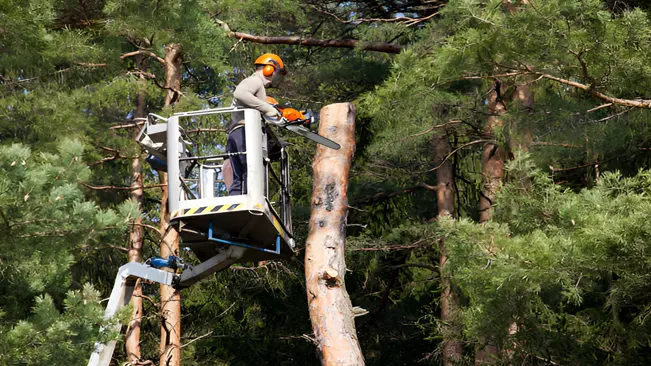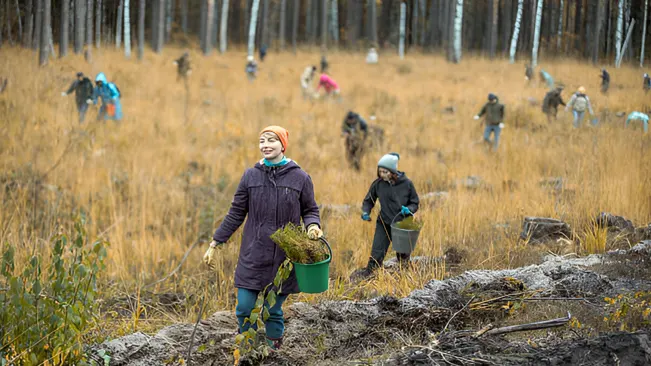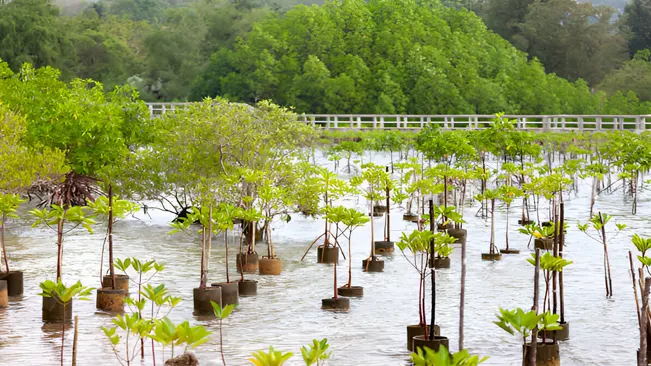Habitat Restoration for Endangered Species: A Lifeline for Survival
- August 19, 2024
- 0 comment
Explore how habitat restoration helps endangered species by recreating vital ecosystems and supporting their recovery. Habitat restoration has emerged as one of the most critical strategies in the fight to save endangered species from extinction. As human activities continue to alter landscapes, degrade ecosystems, and reduce the availability of suitable habitats, the need for effective restoration efforts has become increasingly urgent. This explores the importance of habitat restoration for endangered species, the key strategies involved, and some successful case studies that demonstrate the power of restoration in reversing the decline of at-risk wildlife.
The Importance of Habitat Restoration for Endangered Species
Habitat loss is a major threat to biodiversity, contributing significantly to the plight of endangered species. This loss occurs through various forms, including deforestation, urban sprawl, agricultural expansion, and the impacts of climate change. For species already on the brink of extinction, the destruction and fragmentation of their habitats can be catastrophic, pushing them closer to the edge.
- Recreating Essential Ecosystems: Endangered species often depend on specific habitats that offer the resources they need to survive—such as food, shelter, and breeding sites. For instance, tropical rainforests provide critical habitat for numerous endangered species like the jaguar and orangutan. Habitat restoration involves replanting native vegetation, rehabilitating soil, and re-establishing natural processes to recreate these essential ecosystems. This restoration helps provide the necessary conditions for these species to thrive.
- Promoting Genetic Diversity: Habitat fragmentation can isolate populations of endangered species, reducing their genetic diversity and making them more susceptible to diseases and environmental changes. Restoration efforts that reconnect fragmented habitats can facilitate gene flow between isolated groups. This genetic exchange is crucial for enhancing resilience, improving reproductive success, and ensuring long-term survival. For example, connecting isolated populations of the cheetah has helped increase genetic diversity and reduce health issues related to inbreeding.
- Supporting Ecosystem Services: Restoring habitats not only benefits endangered species but also supports broader environmental health. Healthy ecosystems provide essential services such as water purification, carbon sequestration, and soil stabilization. Wetland restoration, for example, helps in filtering pollutants, regulating water flow, and providing habitat for many species. By improving these ecosystem services, habitat restoration contributes to overall environmental sustainability and resilience, benefiting both wildlife and human communities.
Assisted Natural Regeneration (ANR)
ANR leverages natural processes to restore degraded ecosystems. It involves protecting and enhancing existing natural regrowth rather than replanting new vegetation.

- Invasive Species Control: Removing or controlling invasive species that compete with native plants.
- Human Disturbance Reduction: Minimizing activities like logging or grazing that impede natural recovery.
- Condition Improvement: Enhancing soil quality, water availability, and other factors that support native vegetation.
Reforestation and Afforestation
Reforestation involves replanting trees in areas where forests have been lost, while afforestation refers to creating new forests in areas that were previously non-forested.

- Native Species Planting: Using native tree and shrub species to ensure compatibility with local ecosystems.
- Soil and Water Management: Ensuring the right conditions for tree growth by improving soil fertility and water availability.
- Monitoring and Maintenance: Regularly checking tree health and addressing issues like pests or diseases.
Wetland Restoration
Wetland restoration aims to reestablish natural wetland functions and habitats that have been disrupted by human activities.

- Reestablishing Water Flow: Restoring natural hydrology by removing drainage systems or reintroducing natural water sources.
- Pollutant Removal: Cleaning up pollutants and excess nutrients that harm wetland ecosystems.
- Vegetation Planting: Reintroducing native wetland plants that support wildlife and stabilize the soil.
Habitat Corridors
Habitat corridors are pathways that connect fragmented habitats, allowing wildlife to move between different areas.

- Restoring Degraded Areas: Creating or enhancing corridors by restoring degraded lands between habitat patches.
- Protecting Natural Areas: Ensuring that existing natural habitats remain undisturbed to serve as part of the corridor network.
- Constructing Artificial Corridors: Building overpasses, underpasses, or green bridges to facilitate wildlife movement across human infrastructure.
Invasive Species Management
Managing invasive species is crucial for restoring habitats because they can outcompete, prey on, or otherwise disrupt native species.

- Removal and Control: Eradicating or controlling invasive species through physical removal, chemical treatments, or biological control methods.
- Monitoring: Continuously assessing the presence and impact of invasive species to adjust management strategies.
- Prevention: Implementing measures to prevent the introduction and spread of invasive species.
Challenges and Future Directions
Challenges
- High Costs and Time Commitment: Habitat restoration projects can be expensive and require significant time to implement and see results. The financial burden often includes costs for site preparation, plant and animal reintroductions, ongoing maintenance, and monitoring. Additionally, restoration can be a long-term commitment, sometimes taking decades to fully realize its benefits.
- Resistance from Local Communities or Industries: Restoration efforts may face opposition from local communities or industries that rely on the land for agriculture, logging, or other economic activities. Balancing conservation goals with local livelihoods can be challenging, requiring negotiation and compromise to find mutually beneficial solutions.
- Climate Change Impacts: As climate change alters weather patterns, temperatures, and other environmental conditions, restored habitats may become less suitable for the species they were intended to support. Adapting restoration strategies to account for future climate scenarios and ensuring resilience is an ongoing challenge.
- Ecological Complexity: Restoring an ecosystem involves reestablishing complex interactions between species, which can be difficult to manage. The success of restoration depends on understanding and replicating these interactions, and unexpected ecological changes can complicate efforts.
- Invasive Species: Invasive species can undermine restoration efforts by outcompeting native species and disrupting ecological processes. Managing invasive species is crucial but can be resource-intensive and require ongoing vigilance.
Future Directions
- Advances in Ecological Science: Innovations in ecological science are improving our understanding of ecosystem dynamics and restoration techniques. Research into species-specific needs, ecological interactions, and long-term monitoring can enhance the effectiveness of restoration projects.
- Technological Innovations: Technology plays a growing role in habitat restoration. Remote sensing, GIS (Geographic Information Systems), and data analytics help in planning, monitoring, and managing restoration projects. New tools, such as drones for aerial surveys and automated systems for tracking wildlife, are making it easier to collect and analyze data.
- Community Engagement and Collaboration: Successful habitat restoration increasingly involves engaging local communities and stakeholders. Building partnerships, educating the public, and incorporating local knowledge and needs can lead to more sustainable and accepted restoration efforts. Community-based conservation programs often ensure that local benefits are aligned with conservation goals.
- Adaptive Management: The concept of adaptive management involves regularly assessing and adjusting restoration strategies based on new information and changing conditions. This flexible approach helps address uncertainties and adapt to evolving challenges, such as those posed by climate change.
- Integration with Broader Conservation Strategies: Habitat restoration is most effective when integrated with other conservation strategies, such as protected area management, species recovery plans, and sustainable land-use practices. A holistic approach ensures that restoration efforts contribute to broader conservation goals and ecosystem health.
Conclusion
Habitat restoration is a lifeline for endangered species, offering hope in the face of habitat loss and environmental degradation. By recreating the ecosystems that these species depend on, we can support their recovery and protect the biodiversity that is essential for a healthy planet. While challenges remain, the successes achieved so far demonstrate the power of restoration to bring endangered species back from the brink of extinction. With continued commitment and innovation, habitat restoration will play an increasingly vital role in preserving the world’s most vulnerable wildlife.
FAQs
- What is habitat restoration?
Habitat restoration is the process of returning a degraded or destroyed ecosystem to a state that supports native species and natural ecological processes. It involves activities such as reforestation, wetland restoration, invasive species removal, and the reintroduction of native plants and animals. - Why is habitat restoration important for endangered species?
Habitat loss is a leading cause of species endangerment. Restoring habitats helps recreate the ecosystems that endangered species need for survival, including food sources, shelter, and breeding grounds, thereby increasing their chances of recovery. - What are some common methods used in habitat restoration?
Common methods include Assisted Natural Regeneration (ANR), reforestation, wetland restoration, creation of habitat corridors, and invasive species management. These methods are tailored to the specific needs of the species and the characteristics of the habitat. - How does habitat restoration help in increasing genetic diversity among endangered species?
Restoring and connecting fragmented habitats allows isolated populations to interbreed, which increases genetic diversity. Greater genetic diversity enhances a species’ resilience to diseases, environmental changes, and other threats, improving their chances of survival. - Can habitat restoration reverse the effects of climate change on endangered species?
While habitat restoration cannot reverse climate change, it can mitigate some of its impacts by creating resilient ecosystems that can better withstand climate-related changes. Restoration efforts can also help sequester carbon, contributing to climate change mitigation. - What are the challenges involved in habitat restoration for endangered species?
Challenges include the high cost and time required for restoration, resistance from local communities or industries, the unpredictability of climate change, and ensuring that restored habitats remain sustainable and suitable for the species over the long term. - Are there any success stories of habitat restoration helping endangered species?
Yes, there are several success stories. For example, the restoration of savanna habitats in South Africa has helped stabilize black rhino populations, and the restoration of old-growth forests has contributed to the recovery of the California condor. - How do invasive species impact habitat restoration efforts?
Invasive species can outcompete, prey upon, or otherwise disrupt native species, making it difficult to restore natural ecosystems. Effective habitat restoration often includes managing or removing invasive species to allow native species to thrive. - What role do local communities play in habitat restoration?
Local communities are crucial to the success of habitat restoration efforts. Their involvement in planning, implementation, and monitoring can ensure that restoration projects are sustainable and supported by those who live near and depend on the restored ecosystems. - How long does it take to see the results of habitat restoration?
The timeline for seeing results from habitat restoration varies depending on the scale of the project, the methods used, and the specific species involved. Some improvements may be seen within a few years, while other projects may take decades to fully realize their goals.
The journey of habitat restoration for endangered species is both challenging and rewarding. Each effort to restore habitat is a step towards ensuring that the most vulnerable species have a place to call home. As we continue to embrace restoration practices, we’re not just aiding individual species, but fostering a healthier planet for future generations. By working together, we can turn the tide for endangered species and make a lasting impact on the world’s biodiversity.

Kristine Moore
Forestry AuthorI'm Kristine Moore, a seasoned garden landscaping professional with over 30 years of experience. My extensive career has been dedicated to transforming outdoor spaces into stunning, sustainable landscapes. With a deep understanding of horticulture, design principles, and environmental stewardship, I have become a respected figure in the field, known for creating harmonious, visually appealing, and eco-friendly gardens. My commitment to excellence and continuous learning in landscaping trends and techniques has solidified my reputation as an expert in garden design and implementation.













Leave your comment